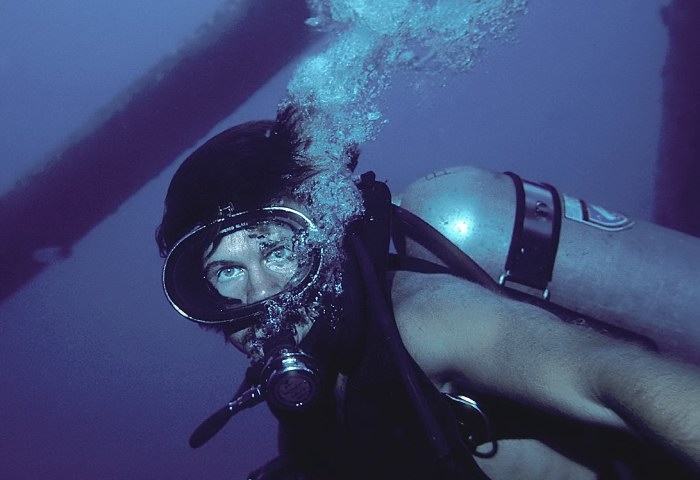Nemrod:"Nemrod uses a twin hose from his avatar, I would not recommend them although they do work.They are a pain to clear if flooded and because of the distance between the reg and your mouth can freeflow or be heavy to breathe depending on you position.
The modern second stage is a definite step forward.However I have never tried a re-breather."
Not true--mostly urban legend, the hoses do not flood because there are cage valves beside the mouthpiece that prevent this, in the early days they did not have this feature and thus the continuation of this "legend." Twin hose regulators are extremely reliable, simple, maintenacnce free and do not freeze, breath quietly and smoothly, no bubbles in face, the mouthpiece is weightless and are just plain fun. The second stage being sealed is partly the reason for the low required maintenance. They are mechanically simple, use only one or two O rings and are robustly built using METAL and not plastic which is why they can last for decades with little maintenance. They can breath different but all regulators are position sensitive, double hose are more so. Nontheless, not all double hose are born equall anymore so than modern regulators. A good Royal Aqua Master, for example, when tuned by an expert can perform on par with any modern plasticfantastic and with no noisy bubbles in your face. In Europe they are called "twin hose" but in the USA they are called "double hose."
NAVED Master Dive 111
The twin hoses I dived did not have these cage valves. They would definitely have been a help.
Buddy breathing techniques would have been a lot easier if the hose did not fill up with water.
These people who complain about buddy breathing on a standard length primary, they should try a buddy breathing ascent on a twin hose. You need to be up close and friendly.
Buddy breathing was much easier with the tank between you.
I do like the idea of having all the bubbles behind me, it would be great for photography.
I think I will have to investigate this further.
Does any maufacturer make a modern version of the twin hose?









